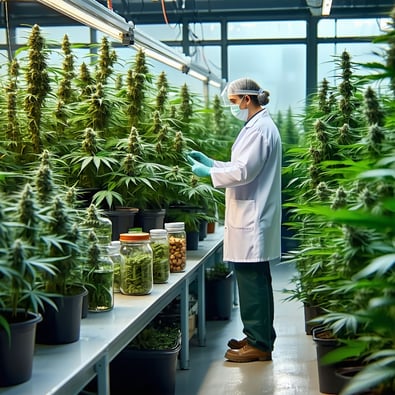As the cannabis industry continues to grow, researchers are taking a deeper look at the Aromas that shape consumer perception and product quality. In an industry often dominated by THC percentages, this new direction highlights how Aromas may offer a more reliable and meaningful way to evaluate cannabis. With consumers becoming more educated and selective, understanding cannabis Aromas is becoming essential for growers, retailers, and brands seeking to differentiate themselves.
A new study has laid the groundwork for developing a standardized lexicon for understanding cannabis aroma, revealing scent patterns and exploring what drives them.
This has given rise to potency inflation in commercially available cannabis products, despite studies linking high THC levels to risk including severe nausea and vomiting, impaired driving and acute psychosis.
Researchers in the American state of Oregon – where medical and recreational cannabis are legal – now offer an alternate path for evaluating actual quality, building on previous research to develop a descriptive aroma lexicon of 25 terms that can be used as a common language, SciTechDaily reports
“Aroma plays a key role in how consumers judge cannabis quality, yet until now there’s been no standardized language to describe it,” Tom Shellhammer, co-author and professor of food science and technology at Oregon State University, told SciTechDaily. “This research lays the groundwork for a shared vocabulary that benefits consumers, retailers and growers.” The study called on a panel of 24 experts who had prior experience with sensory analysis of food and beverages. Researchers had them examine the aroma of unburned samples of hemp and cannabis, categories assigned to the same Cannabis sativa species based on THC concentration. Hemp contains 0.3 percent THC or less, while higher concentrations are classified as cannabis under US law.
They found samples from the two categories exhibited overlapping sensory profiles, although cannabis was more often described as “skunky,” “musty” and “animalic” (savory), while hemp had higher frequencies of “citrus,” “fruit” and “candy-like” aromas. Of the four distinct aroma profiles that emerged from the research, “fruit, berry, candy,” “citrus and chemical,” “cheesy and vomit/fecal” were predominantly associated with hemp, while “funky, earthy, musty, straw, fuel, black tea, woody and nutty/toasted” were associated with cannabis. These profiles are expected to evolve with more research.
The research also revealed that terpenes and volatile sulfur compounds found in hemp and cannabis did not strongly predict sensory perception, challenging notions that specific aromas are associated with specific terpenes.
“As the cannabis industry transitions from unregulated to legal frameworks, it’s critical to offer consumers tools for assessing product quality beyond terpenes and THC,” Shellhammer said. “This work begins to lay the foundation for that.”
As interest grows, more experts believe Aromas will play a central role in future cannabis quality standards. From growers refining cultivation techniques to retailers educating buyers, understanding Aromas opens the door to a more accurate and consumer-friendly system. With ongoing scientific research and evolving aroma lexicons, the cannabis industry is moving toward a future where Aromas speak louder than THC percentages. By embracing Aromas, producers and consumers alike gain a clearer path to consistency, transparency, and genuine product quality something the entire market can benefit from.





